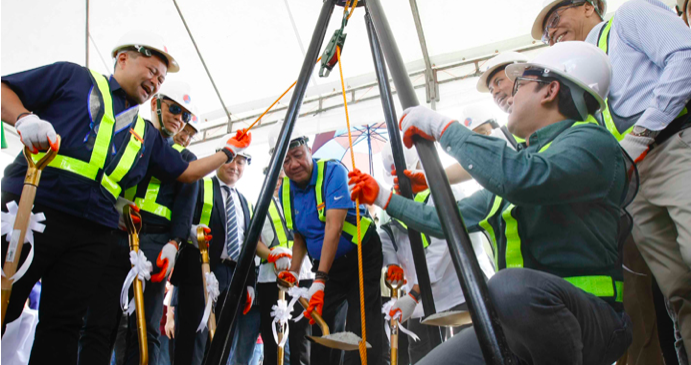
The Department of Transportation has conducted the groundbreaking for the Metro Manila Subway System, the first in the country.
Speaking in Valenzuela City today (Wednesday, February 27) Transportation Secretary Arthur Tugade said: “When we announced that we are doing the subway, many sectors did not believe. They told us: subway station? This is only a plan and will not become a reality. To all those who are doubting, the subway station is now a reality. This will provide a comfortable life for Filipinos.”
Undersecretary for Railways Timothy John Batan said the joint venture of Shimizu Corporation, Fujita Corporation, Takenaka Civil Engineering and EEI Corporation will be in charge of designing and building the first three stations of the subway, tunnels, its Valenzuela Depot and the facilities of the planned Philippine Railway Institute.
“Each subway station will feature an intermodal facility that will make transfers to and from road-based transport seamless and convenient,” Batan said.
The 36-kilometre subway will have 15 stations from Quirino Highway in Quezon City to Ninoy Aquino International Airport and Taguig City. It will traverse seven localities and pass through three of Metro Manila’s business districts.
Travel time from Quezon City to the airport is estimated to be reduced to only 30 minutes with trains running at speeds of up to 80kph.
The subway will connect with other rail lines such as the PNR Clark, PNR Calamba and the Common Station.

The subway will feature technological advancements and disaster-resilient strategies to strengthen its structural integrity amid regular occurrence of typhoons and earthquakes.
The subway is expected to open in 2022 with three stations — Quirino Highway-Mindanao Avenue, Tandang Sora, and North Avenue with full operations set to begin in 2025.
It is expected to serve up to 370,000 passengers daily during its first year of full operations, with a design capacity of up to 1.5 million passengers per day.
Tugade and other officials were in Osaka, Japan, last week to inspect tunnel boring machines that will be used for the construction of the subway.
The Philippine and Japanese governments signed a loan agreement for the subway project, with an initial tranche amounting to 51.37 billion pesos in March last year.

Comments are closed.